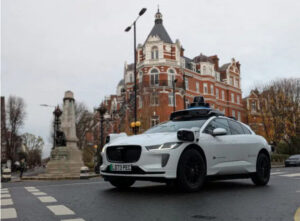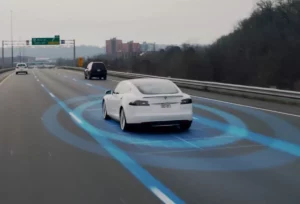Researchers at Jaguar Land Rover are working on software aimed at reducing reduce motion sickness in driverless cars.
Studies have suggested that some of the benefits of autonomous driving, such as working or watching TV, might be offset by sickness felt by passengers. This was reported by Highways News earlier in the year.
However designers think that the driving style of future autonomous vehicles could be adapted to offset the problem and provide customers “with the most refined and comfortable ride possible”.
During the first phase of the project, a personalised ‘wellness score’ was developed which could reduce the impact of motion sickness by up to 60%. Experts at the company’s specialist software engineering facility in Shannon have now implemented that score into self-driving software.
The intelligent software combines 20,000 real-world and virtually-simulated test miles to calculate a set of parameters for driving dynamics to be rated against. Advanced machine learning then ensures the car can optimise its driving style based on data gathered from every mile driven by the autonomous fleet.
Motion sickness, which studies suggest affects more than 70 per cent of people, is often caused when the eyes observe information different from that sensed by the inner ear, skin or body – commonly when reading on long journeys in a vehicle. Using the new system, acceleration, braking and lane positioning – all contributory factors to motion sickness – can be optimised to avoid inducing nausea in passengers.
As a result of the project, JLR says engineers are now able to develop more refined advanced driver-assistance systems, such as adaptive cruise control and lane monitoring systems. The in-depth knowledge is helping Jaguar Land Rover design and manufacture capable and advanced vehicles, both now and in the future.






















